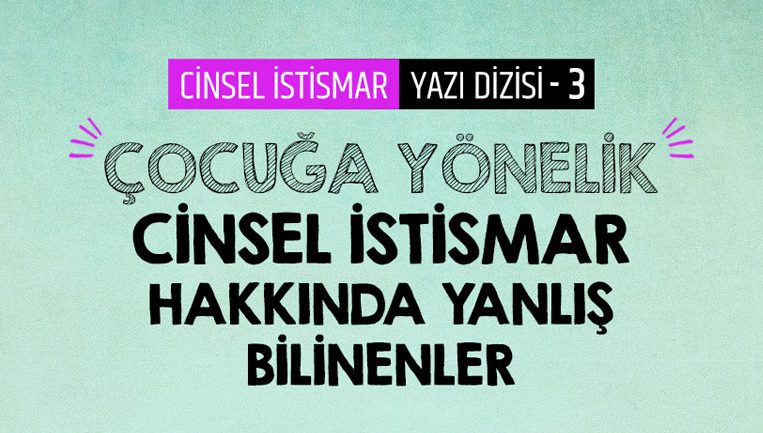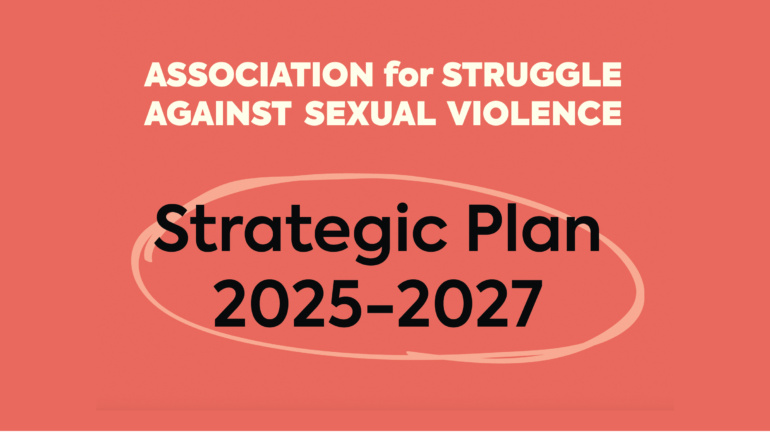
Sexual violence is merely an act of violence, not of sexuality, about power and authority. There is no environment immune to these power dynamics, nor has the Association for Struggle Against Sexual Violence (CŞMD) ever been. In order for fostering social change and transformation, it is essential that each persons should confront the brutal facts that they may be either the perpetrator or the survivor of violence some day and should take responsibility for their own actions. Sexual violence can occur in any type of relationships, regardless of gender, sexual orientation or gender identity.
1. PURPOSE and SCOPE
Purpose of this document is;
a) To present the institutional political approach of the Association for Struggle Against Sexual Violence against violence and harassment,
b) To provide a clear cut and updatable policy that can be applied with an equal and fair approach in case of sexual harassment and violence cases that may occur within the Association,
c) To determine the responsibilities of the Association and the persons during and after the reporting of sexual violence and/or harassment cases,
d) To create a safe space for the members of Association (staff, members, volunteers and interns) and to ensure that the parties know their rights
e) To provide a preventive-protective and remedial tool in order to prevent the violent behaviors and recurrence of them.
The principles and practices provided in this document cover all staff, the bodies of the Association (members and the alternate members of Board of Directors, Supervisory Board, Association’s members), volunteers and interns working actively in the Association.
It will be applied in case of the actions that take place both within the Associations office and fields of activity, and that occur among the members of the Association (staff, members, volunteers and interns), and that occur outside of the Association’s premises but influencing the Association’s environment or that have an impact on the activities and working environment of the Association.
2. PRINCIPLES
In line with the principles adopted during the preparation, operation and updating of this document
The Association is;
- Requiring no onus of proof in the testimonies. No one is obliged to prove and document the violence they are exposed to. The process based on the survivor’s own testimony that carries an evidentiary weight is started immediately without seeking proof. The zero tolerance policy is adopted in case of sexual violence and the Association acts without establishing any kind of hierarchy between the testimonies.
- Encouraging and Supportive: During the process, due care and attention is paid for avoiding any action that may cause the applicants to be victimized, be discouraged and to lose their motivation and that may damage the dignity and confidence of the parties. The Association is attentive to prevent such actions. It acts to operate mechanisms that empower the survivors of violence and that support their recovery. In the support process, it refrains from questioning and accusing statements, behaviors, attitudes and allusions that will increase the victimization.
- Impartial/Having Fair Approach: People are treated equally, fairly and impartially. The process is carried out by respecting the rights of the parties. The focus is on behavior, not persons, considering the fact that anyone can be the perpetrator or the survivor of sexual violence.
- Protecting Confidentiality: The process is carried out at all stages in a way to protect the privacy of the persons who apply and about whom a testimony is provided. Persons involved in the reporting and review process are obliged to protect confidentiality and to handle the process by respecting the dignity of all persons involved.
- Inclusive: In line with the vision and mission of the Association, its approach to sexual violence and harassment cases is also inclusive and intersectional. Possible power relations (ethnicity, gender, position, status, etc.) between the parties are taken into account, regardless of gender identity and sexual orientation.
3. CONCEPTS AND DEFINITIONS
Sexual Harassment: are disturbing attitudes, words and/or behaviors that are not based on consent having a sexual nature in visual, verbal and behavioral sense without physical contact; in direct or implicit way. It can also occur among those having equal status. It may cause the survivors to suffer from confusion, perplexity, and inability to make sense. Therefore, even if the persons who think that they have been subjected to sexual harassment is not sure about the nature of the event, they can request support by reporting this situation to the relevant unit. Perpetuity is not necessary; it is sufficient that the action occur once.
- Sexual Harassment as Petty Crime: includes the acts that do not contain threats, blackmail or insults, but lead to the disturbing and undesirable environments. For example: catcall, making sexual jokes and compliments, or using slang words.
- Sexual Harassment as Major Crime: includes the acts caused by threats, blackmail or insults, etc. aiming at controlling the behavior of the person. For example: Asking questions or mongering rumor about the person’s sexual life and/or gender identity, having discriminatory statements and actions regarding gender or sexual orientation or gender identity.
- Sexual Harassment with Perpetual Cycle: While a single act can be evaluated as sexual harassment, situations where the offensive acts are perpetual are defined as perpetual cycle of harassment. It occurs when Sexual Harassment as Petty Crime continues despite all the warnings. For example: Being persistent to flirt, coercion by emotional pressure by not accepting no for an answer, stalking, to harass frequently on the phone or via electronic tools.
The behaviors in question disturb the person; challenge their existence in the environment. It is not the intention of the perpetrator that determines the sexual harassment, but the impact on the survivor. The only responsible person for the harassment is the person who is behind these behaviors.
Sexual Assault: is an act not based on consent, consent is not sought or built; It is any physical act having sexual nature or violating bodily integrity. Regarding the extent of the acts, provided that it does not establish a hierarchy within the scope of approach and evaluation, different sanctions may be enforced.
Sexual Assault as Petty Crime: It occurs in the form of a simple violation of a person’s bodily integrity. For example, hugging, touching, fondling, depending on the characteristics of the situation.
Sexual Assault As Major Crime: It occurs in the form of a serious violation of a person’s bodily integrity. For example, unconsented penetration and/or an attempt in that regard, oral rape, stealthing.
Retaliation: When persons, who believe that they have been subjected to sexual harassment while they rebuff a proposal for intercourse or romantic relation, file a complaint through, all the adverse actions taken against these persons for making the life difficult with the aim of revenge or to retaliate against constitutes the retaliation. Retaliation can occur in private life or in public areas. In Quid pro quo sexual harassment where one party forces the other party to offer sex in return for privileges like reward or promotion within the first party’s powers can also be considered as a kind of consent building. Retaliation covers the acts against someone who wants to report or has filed a complaint on sexual harassment and/or assault. Actions against bystanders who want to report a case are also considered as retaliation. Retaliation is considered as a form of sexual harassment, and necessary protection mechanisms should be in place for those who choose to file a complaint against retaliation.
Visible and Implicit Forms of Hierarchy: are the forms of emotional violence that can occur when the dynamics inbetween that can lead to power differences (cisgender/transgender, experience and knowledge, age, salary/status, social power within and outside the Association, dominant/responsive characters, etc.) turn into the tools of covert or explicit punishment, intimidation, humiliation, degrading, exclusion and silencing. Behaviors of sexual violence drawing its strength from Implicit or visible hierarchical positions or situations are taken into account within the scope of complaints notified to the Association or when evaluating the testimony process.
Note: The other policy documents complementary to this document herein have been entered into force to be used as internal documents.





